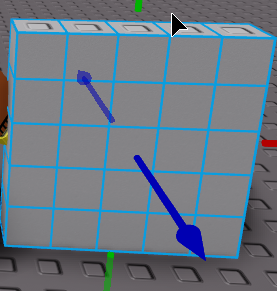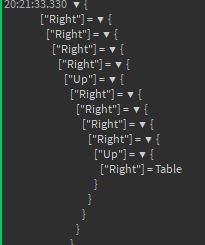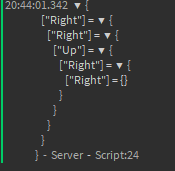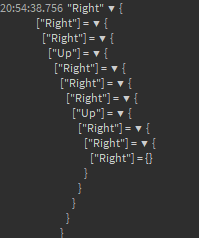Trying to create a grid like you would make binary trees, using recursion.
I’m kinda confused by it atm thought so i’m wondering if anyone can solve it
My code:
local SS = game:GetService("ServerStorage")
local Zone = SS:WaitForChild("Zone")
local XMax = 5
local YMax = 5
local function MakeZoneObject(X, Y)
local NewZone = {}
NewZone.Part = Zone:Clone()
if X < XMax then
X = X + 1
NewZone.Right = MakeZoneObject(X, Y)
print("Created X part:")
else
X = 0
if Y < YMax then
Y = Y + 1
NewZone.Up = MakeZoneObject(X, Y)
print("Created Y part:")
end
end
return NewZone
end
local Map = MakeZoneObject(1, 1)
The current output:
Expected output: I want it to simulate a 5 x 5 grid, so it would create a block, then a block to it’s right 4 times, then go up one block from the start, then 4 blocks to the right of that, and so on (This isn’t for a game, just to understand recursion better)
2 Likes
I’m not sure I understood your question correctly, but anyway here is my answer
local XMax = 5
local YMax = 5
local fcol
fcol = function (y, x)
if y <= 1 then
return {"Zone" .. tostring(x) .. tostring(y)}
else
local row = fcol(y - 1, x)
table.insert(row, "Zone" .. tostring(x) .. tostring(y))
return row
end
end
local frow
frow = function (x)
if x <= 1 then
return {fcol(YMax, x)}
else
local matrix = frow(x - 1)
table.insert(matrix, fcol(YMax, x))
return matrix
end
end
local map = frow(XMax)
print(map)
look at the output
Your problem is that you’re setting X back to 0 as the starting point for every Y addition. Your starting point is X = 1, Y = 1 as defined in the function call parameters, but you’re setting the X back to 0 every time you update the Y, resulting in an incorrect grid.
You should change it to:
else
X = 1
Because you want to make a 5 by 5 grid, not a 6 by 5 grid. Why does it run 6 times you may ask? With X as 0, your if statement will start counting from 0, add 1 to it until it has ran 6 times to make X = 5.
After making this change, this is the expected grid output visualized by parts:

Would this output go up one after the 5th block to the right and then create 4 more blocks to the right of that one, instead of going up one block from the start and creating 4 more blocks to the right of that though?
No, it wouldn’t. Sorry I misunderstood your question.
This is what it currently does and this is what I thought you wanted:

Yes that is what I wanted. But when the 5th part creates a newzone.right, won’t that end up being the part at the start of the next row? Since X is == XMax, so the 5th part’s newzone.right will be set to an up part, when the first newzone.up part should be the newzone.up of the first part made (since it’s directly above it)
1 Like
I understand now what you’re trying to do, so you’re returning the values of each recursion to the map. This creates the following output which is not according to the mapping:

In order to correct this, make the following change in your code:
if X <= XMax then
I’ve tested this on a XMax = 2 and YMax = 2 and (1, 1) as the function parameter starting point and it seems to give the correct mapping output (should work on 5 by 5 but the output is too long for me to debug):

Here’s the full code:
local SS = game:GetService("ServerStorage")
local Zone = SS:WaitForChild("Zone")
local XMax = 5
local YMax = 5
local function MakeZoneObject(X, Y)
local NewZone = {}
if X <= XMax then
X = X + 1
NewZone.Right = MakeZoneObject(X, Y)
print("Created X part:")
else
X = 1
if Y < YMax then
Y = Y + 1
NewZone.Up = MakeZoneObject(X, Y)
print("Created Y part:")
end
end
return NewZone
end
local Map = MakeZoneObject(1, 1)
Tested by making a 3 by 3 grid:

So since we’re making X <= XMax, we’re making it loop to its maximum 5 and returning that value. With X < XMax it’s ignoring the max value and staying 1 below its maximum limit.
1 Like





